Suchergebnisse
Colors of Nature - vegetable dyes in practice
By means of optimization of the production of vegetable dyes and dyeing technology, the vegetable dyestuff "Colors of Nature" will achieve market maturity. In co-operation with farmers and companies of the textile, food processing and wood working industry there has been developed a competitive product throughout the value chain, which will not only yield an ecological advantage, but also generate regional creation of value.
Green Biorefinery

An innovative Technology Concept for the Creation of a Sustainable Supply of Raw Materials within the "Fabrik der Zukunft" Subprogram
Forschungsforum
1/2004
Herausgeber: BMVIT
Englisch, 6 Seiten
Downloads zur Publikation
Nawaro-Cascading
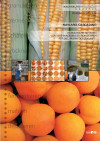
Kaskadische Nutzung von nachwachsenden Rohstoffen für die "Fabrik der Zukunft"
Forschungsforum
1/2005
Herausgeber: BMVIT
Deutsch, 6 Seiten
Downloads zur Publikation
Fiber And Dye Plants
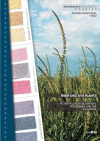
Potentials for Cultivation, Processing, and Use in Austria
Forschungsforum
1/2002
Herausgeber: BMVIT
Englisch, 6 Seiten
Downloads zur Publikation
Wissensbasierte Sortierung von Blütenpollen
Blütenpollen für medizinische Anwendungen können von speziellen Maschinen sortiert werden. Eine integrierte Datenbank und spektrometrischer Abgleich erlauben eine präzise Trennung von Blütenpollen mit Bestimmung der Pflanzenarten.
Grüne Bioraffinerie
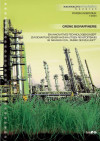
Ein innovatives Technologiekonzept zur Schaffung einer nachhaltigen Rohstoffbasis im Rahmen von "Fabrik der Zukunft"
Forschungsforum
1/2004
Herausgeber: BMVIT
Deutsch, 6 Seiten
Downloads zur Publikation
Berichte aus Energie- und Umweltforschung 19/2002 Naturkosmetik - Innovationen aus Pflanzen

Lichtschutz und Konservierung aus heimischen Pflanzenkulturen für naturkosmetische Erzeugnisse
Knowledge based determination of plant species
Pollen for medical applications can be sorted by special machines. An integrated database and a spectrometric calibration allow a precise separation of the species with an identification of the plant species.
Cascading Of Renewables
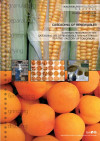
Austrian Research on the Cascading Use of Renewable Raw Materials for the "Factory of Tomorrow"
Forschungsforum
1/2005
Herausgeber: BMVIT
Englisch, 6 Seiten
Downloads zur Publikation
Colors of Nature - Pflanzenfarbstoff in der Praxis
Durch die Optimierung der Farbstoffherstellung und der Färbetechnologie wird Pflanzenfarbstoff "Colors of Nature" marktfähig. In Kooperation mit den Unternehmen der Textil-, Agrar-, lebensmittel- und holzverarbeitenden Industrie wurde entlang der Wertschöpfungskette ein konkurrenzfähiges Produkt entwickelt, das nicht nur ökologische Vorteile bringt, sondern auch regionale Wertschöpfung generiert.
Natural Dyes for the Textile Industry
New cooperations between agriculture und industry are necessary to ensure the utilization of renewable materials. The project´s focus is upon natural dyes and their application in textile industry. The goal of the project is to create a contact institution which connects various suppliers of diverse plant materials, takes on the processing, and standardising of the natural dyes, and makes a product that can be used by the industry.
NAWARO-CASCADING
Unterstützung und Aufbau eines Pilotprojektes zur kaskadischen Nutzung von Steirischen Früchten
TRADEMARKFarb&Stoff
Von der Idee zum marktfähigen Handelsprodukt: Pflanzenfarben für die Textilindustrie.
TRADEMARKFarb&Stoff
From an idea to a trade product ready for marketing: Plant dyes for the textile industry.
Faser- Und Färbepflanzen
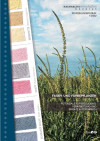
Potenziale für Erzeugung, Verarbeitung und Einsatz in Österreich
Forschungsforum
1/2002
Herausgeber: BMVIT
Deutsch, 6 Seiten
Downloads zur Publikation
FABRIK der Zukunft Hintergrundband Teil 1
Der vorliegende Hintergrundband soll einen umfassenden Überblick über die hervorragenden Ergebnisse aus der Programmlinie "Fabrik der Zukunft" geben, wobei insbesondere die Projekte der 1. und 2. Ausschreibung der Programmlinie dargestellt werden.
Berichte aus Energie- und Umweltforschung 6a/1997 Nachwachsende Rohstoffe und Sanfte Chemie. Teil a: Grundlagen

Theoretische Grundlagen, Chancen und Perspektiven für Österreich
Grüne Bioraffinerie - Gewinnung von Proteinen aus Grassäften
Erforschung und Entwicklung eines technischen Verfahrens zur Proteingewinnung aus Gras, in Hinsicht auf Hochprotein-Futtermittel mittels Ultrafiltration und diversen Aufschlußverfahren.
Berichte aus Energie- und Umweltforschung 17/1997 Stoffliche Nutzung nachwachsender Rohstoffe

Untersuchung der Stoffflusswirtschaft auf der Basis nachwachsender Rohstoffe
FARB & STOFF - Sustainable Development durch neue Kooperationen und Prozesse
Neue Partnerschaften zwischen Landwirtschaft und Industrie zur stofflichen Nutzung nachwachsender Rohstoffe: gezeigt am Beispiel der Textilfärbung mit Farbstoffen aus der Natur
